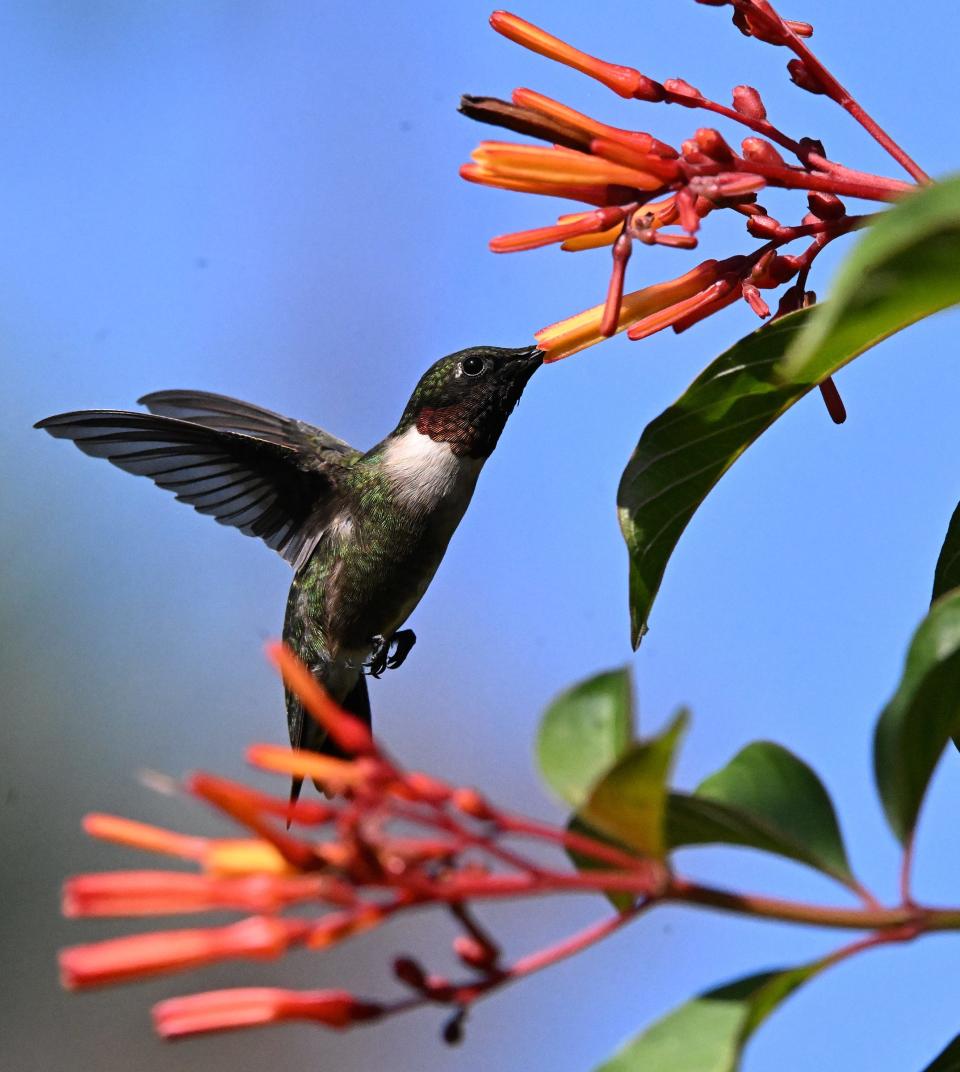'The gateway drug to bird watching': 15 interesting things to know about hummingbirds
Hummingbird migrations take place in spring and fall and those events are cause for excitement among many people.
"They are the gateway drug to bird watching because they are incredibly charismatic," said Erik Johnson, director of conservation science with Audubon Delta. "People love hummingbirds."
Their tiny sizes, beautiful colors and the fact that they can be readily attracted with feeders make them a favorite.
And so does their fighting over feeders.
"They're incredibly entertaining," Johnson said. "If you put out a feeder, you basically have a wrestling match."
Map of hummingbird migration: Every state they'll arrive in plus feeding tips

15 facts about hummingbirds
Hundreds of species: Johnson said there are currently 363 recognized species. He said that number continues to grow as new species are identified.
Only in the Americas: Hummingbirds are found nowhere else in the world except in the Americas. However, that may not have always been the case. Johnson said that 30 million years ago a hummingbird ancestor lived in the area now known as Poland and Germany.
Smallest birds in the world: Johnson said hummingbirds as a family are the smallest birds on Earth, but they aren't all the same size. The bee hummingbird is the smallest bird in the world weighing 2 grams. For comparison, a penny weighs 2.5 grams.
Frigid sleepers: Johnson said the body temperatures of hummingbirds is around 104 degrees, but that can plunge at night. He said they go into a hibernation-like state when sleeping and their body temperatures have been recorded as low as 38 degrees.
Spiders help build nests: Johnson said hummingbirds build nests using lichens and line it with very soft plant material, but they depend on spiders to provide some of the construction material. The birds use silk from spider webs to bind the other materials together.
Nests that grow: Because of what hummingbirds use to build their nests, they are flexible and expand as the baby birds grow to accommodate the increase in size.
Tiny eggs: Johnson said hummingbirds typically lay two eggs and they are roughly the size of a Tic Tac.
Long-distance travelers: Hummingbirds can travel thousands of miles while migrating. Johnson said rufous hummingbird migrations can take them close to 4,000 miles between Alaska and Mexico each fall and spring.
Ruby-throated hummingbirds also get a special honor. They have the longest over-water flight of hummingbirds and travel 500-600 miles non-stop over the Gulf of Mexico.
Incredible eaters: Johnson said the little birds have big appetites and consume twice their weight in food daily. To put that in perspective, that's the same as a 150-pound person eating 1,200 1/4-pound hamburger patties every day.
Spiders help feed humming birds, too: Johnson said in addition to nectar, the birds eat small flying insects and some of those they pick from spider webs.
More: Bird feeding can be great for humans but could harm the birds we love, study shows
Not many feathers: Hummingbirds have about 940 feathers; the least of any bird. In contrast, Johnson said swans have more than 20,000.
Tongues that pump: Johnson said hummingbirds have grooves in their tongues and when drinking nectar, they contract the muscles in their tongues and the grooves act like tiny pumps.
Incredible memories: Johnson said hummingbirds have an incredible memory. He said they return to the same areas every fall and spring, although not always by the same routes. They also can remember which flowers they visited for nectar and how long ago it was. That prevents them from wasting energy by visiting the same flower before it has produced more nectar.
A colorful group: Johnson said hummingbirds have the most diverse range of colors of any family of birds.
Some species struggling, others extinct: Johnson said while ruby-throated hummingbirds are thriving as a species, some others are not. He said two have gone extinct in the last 150 years and a third probably has, too. Habitat loss is considered a contributing threat.
Do you have a story idea? Contact Brian Broom at 601-573-2589 or bbroom@gannett.com.
This article originally appeared on USA TODAY: 15 interesting facts about hummingbirds, the gateway to bird watching

